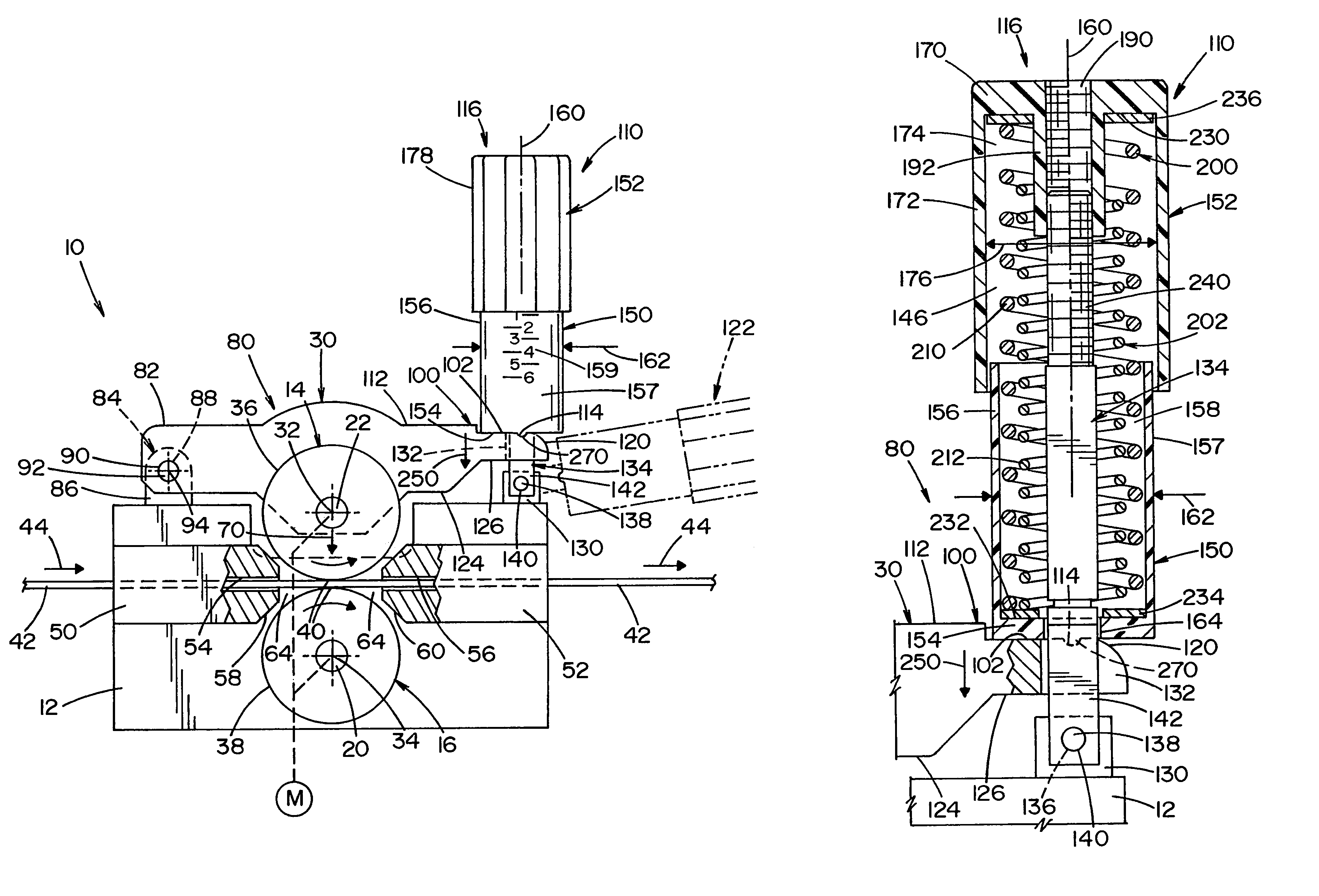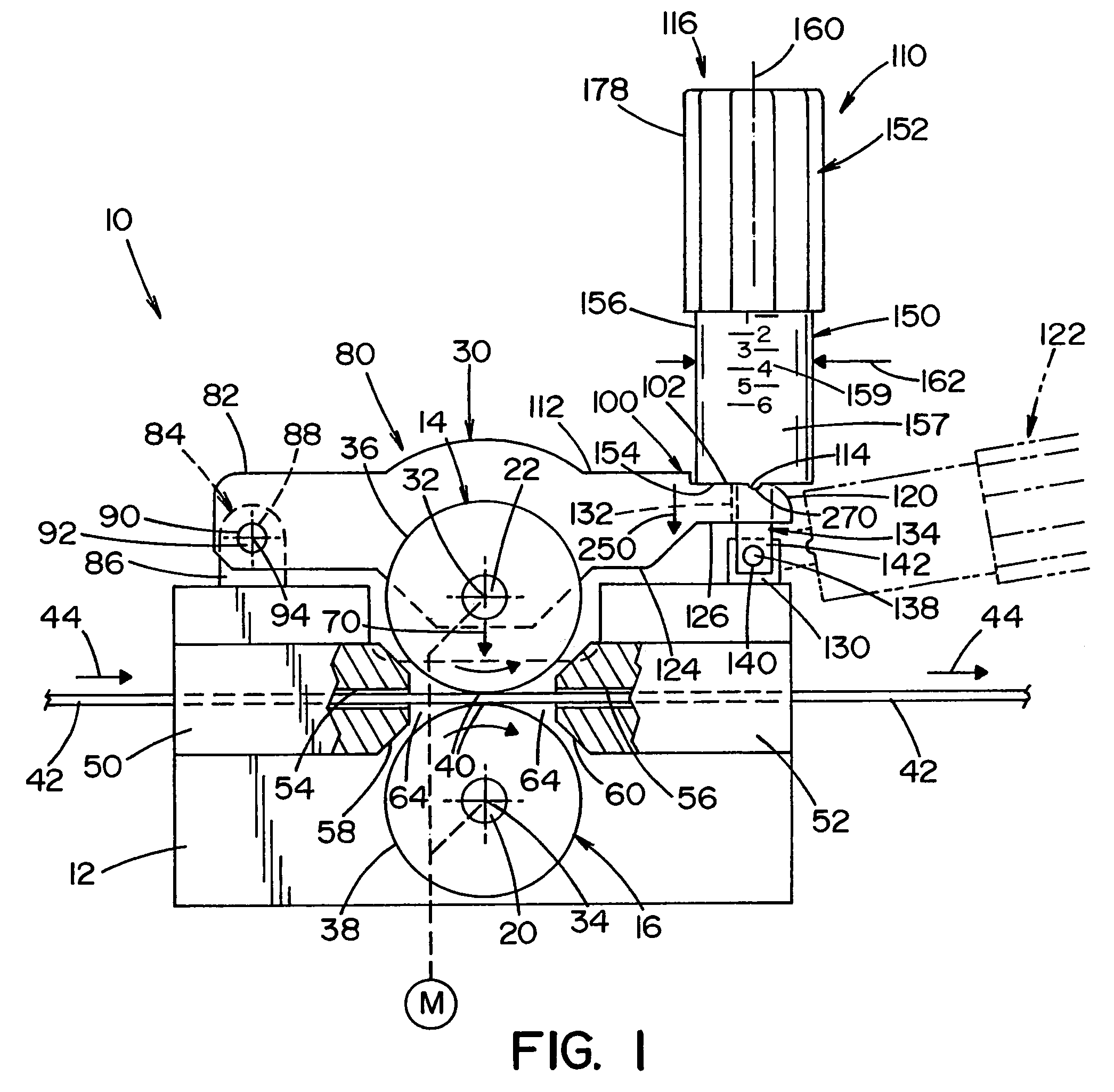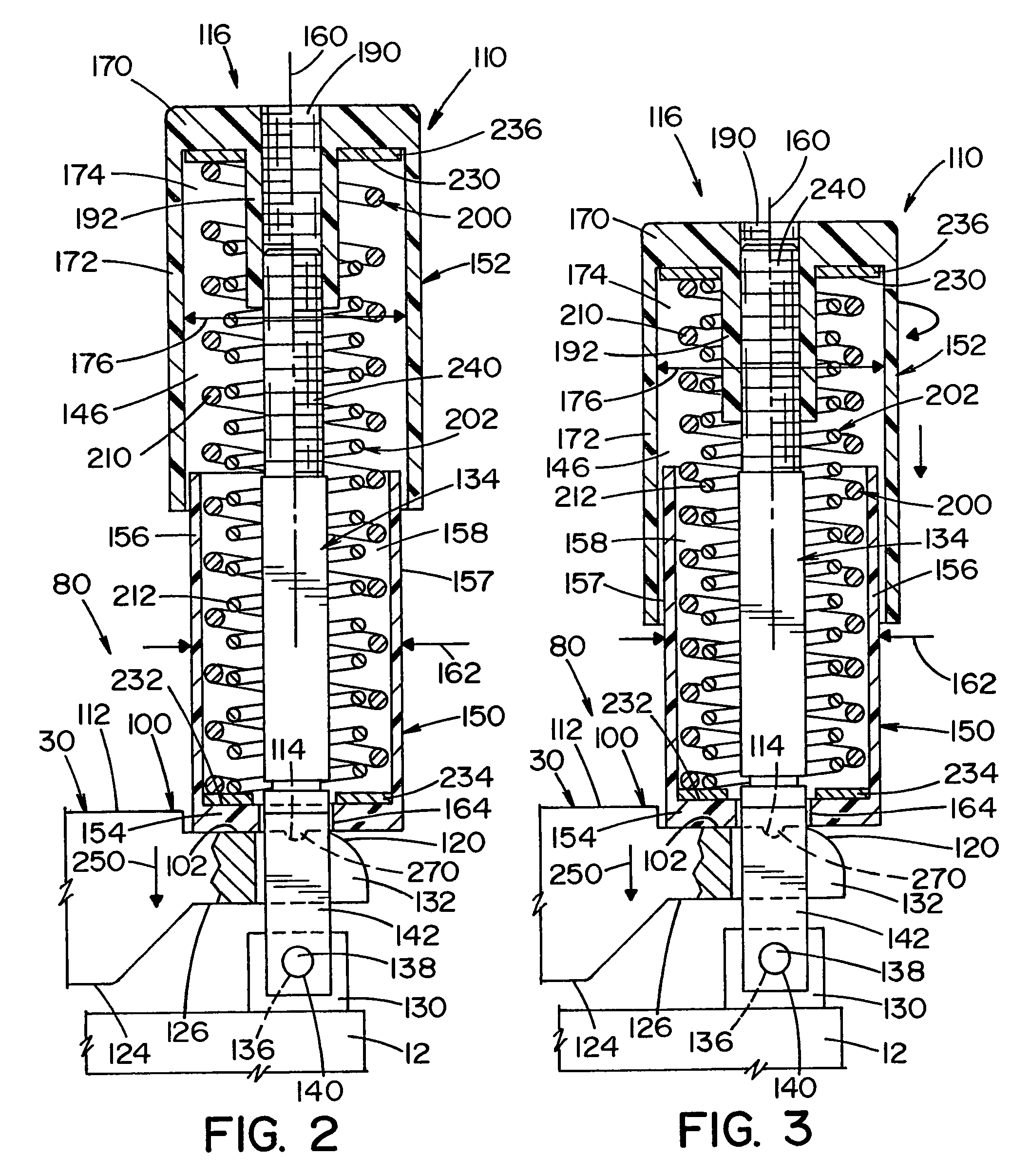Wire gripper for a drive unit of a wire feeder
a technology of wire feeder and drive unit, which is applied in the direction of manufacturing tools, wound springs, transportation and packaging, etc., can solve the problems of reducing the efficiency of the welding process, the ineffective control system, and the inability to use in the field, and achieves the effect of long service life, convenient field use, and economic manufactur
- Summary
- Abstract
- Description
- Claims
- Application Information
AI Technical Summary
Benefits of technology
Problems solved by technology
Method used
Image
Examples
Embodiment Construction
[0037]Referring now in greater detail to the drawings wherein the showings are for the purpose of illustrating preferred embodiments of the invention only, and not for the purpose of limiting the invention, FIGS. 1–4 show a drive unit 10 for a welding wire feeder (not shown). Drive unit 10 includes a support member 12 which is secured to the wire feeder and has a set of pinch rollers 14 and 16. Pinch rollers 14 and 16 are the drive rollers for the drive unit and are connected to an electric drive motor M which is known in the art and schematically shown. As is shown in Seufer, a gear box is used to connected the drive motor to the pinch rollers. It should be appreciated that other drive mechanisms could be used without detracting from the invention of this application. Furthermore, more than one set of drive rollers could also be used in accordance with the present invention.
[0038]Pinch roller 16 is a fixed roller which rotates about a fixed roller axle 20 thereby rotating about a f...
PUM
| Property | Measurement | Unit |
|---|---|---|
| spring modulus | aaaaa | aaaaa |
| height | aaaaa | aaaaa |
| heights | aaaaa | aaaaa |
Abstract
Description
Claims
Application Information
 Login to View More
Login to View More - R&D
- Intellectual Property
- Life Sciences
- Materials
- Tech Scout
- Unparalleled Data Quality
- Higher Quality Content
- 60% Fewer Hallucinations
Browse by: Latest US Patents, China's latest patents, Technical Efficacy Thesaurus, Application Domain, Technology Topic, Popular Technical Reports.
© 2025 PatSnap. All rights reserved.Legal|Privacy policy|Modern Slavery Act Transparency Statement|Sitemap|About US| Contact US: help@patsnap.com



